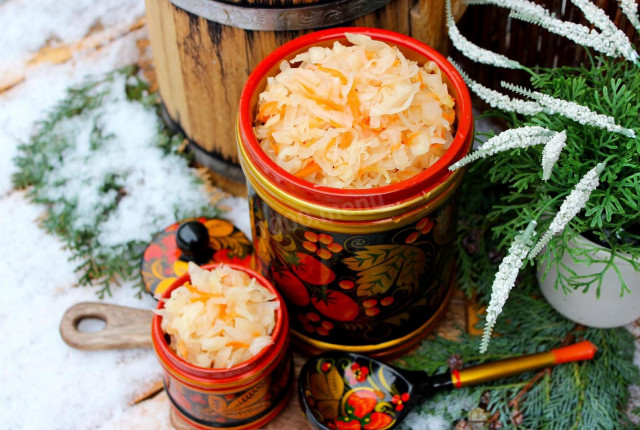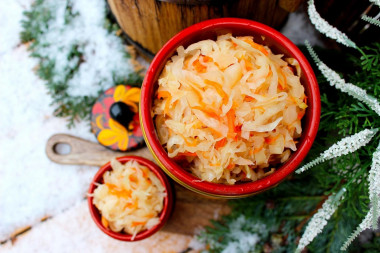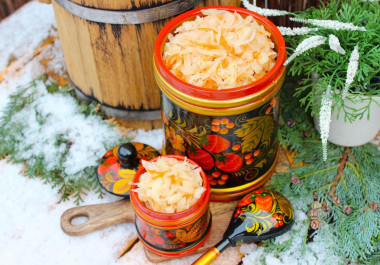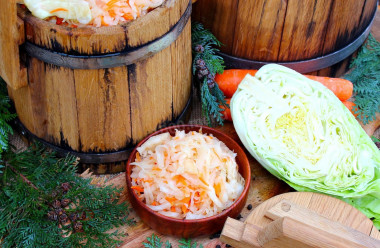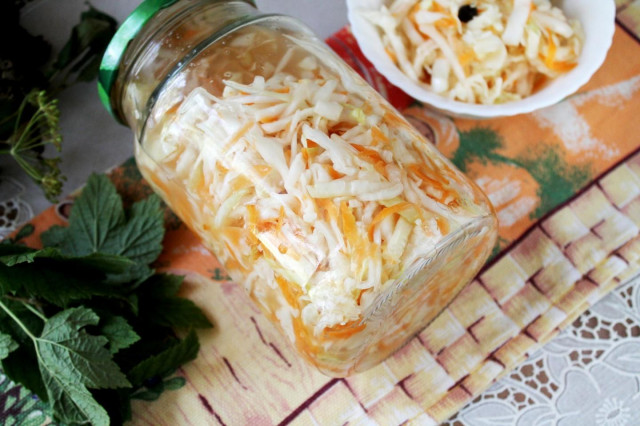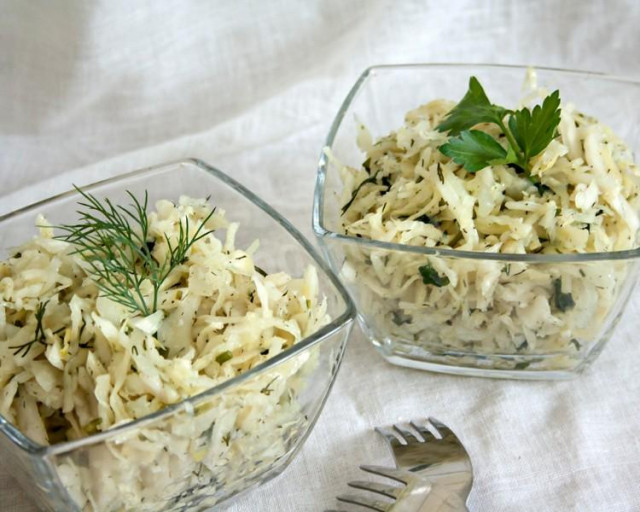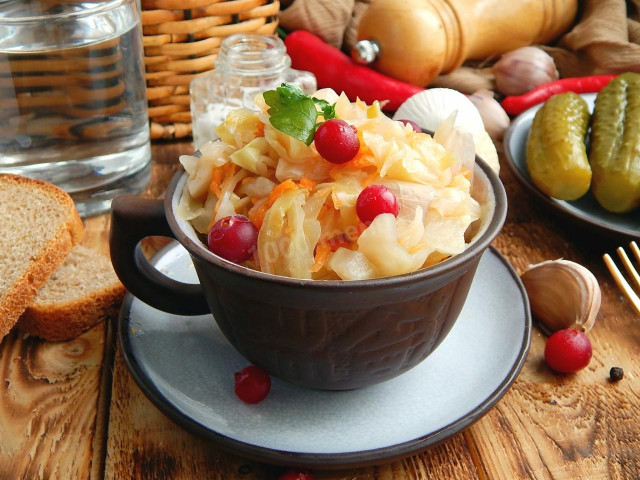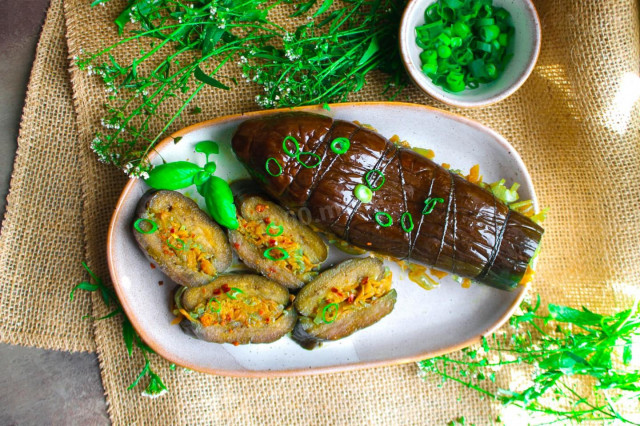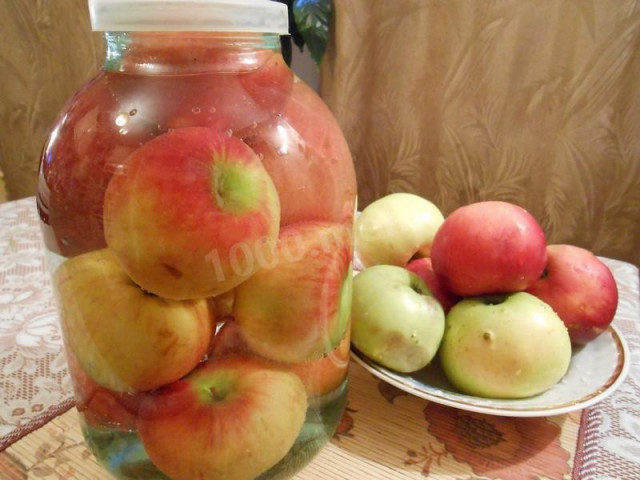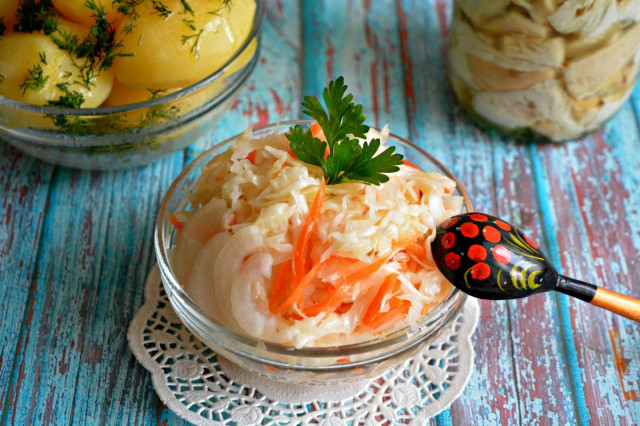Composition / ingredients
Step-by-step cooking
Step 1:
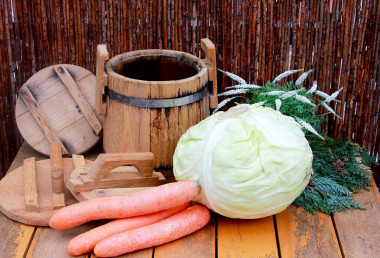
How to ferment cabbage in a barrel for the winter? First of all, prepare the container. Fill it with water and see if there are any cracks. If the barrel has not been used for a long time, then pour warm water into it and leave it for 5 to 10 days. Change the water periodically. During this time, the wood will swell and the barrel will be ready for operation. Wash the cooperage with baking soda, rinse thoroughly and proceed to the main cooking process.
Step 2:
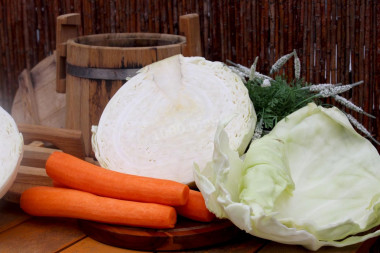
Prepare all the products needed for the recipe. You will need a minimal set of components. Early salad cabbage is not suitable for salting for the winter. It is better to use the heads collected at the end of September- in October. Rinse the cabbage and dry it. Remove the damaged sheets. Cut off the top few sheets and set aside. Peel the carrots and wash them.
Step 3:
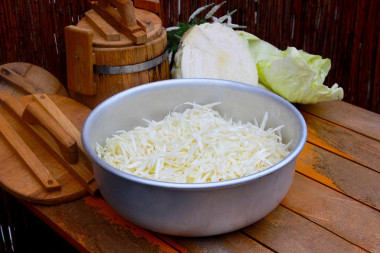
Cut the cabbage into strips of medium thickness. Do not chop too thinly, otherwise the finished product will turn out soft. Send the shredded cabbage to a large deep container. To make it easier to make the preparation, cut the vegetables and knead them in parts.
Step 4:
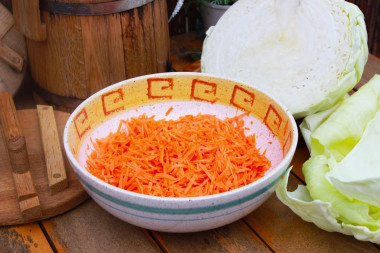
Grate the carrot on a coarse grater. Take the amount of carrots to taste, but do not use it too much, so as not to interrupt the taste of cabbage. Usually, 500 to 800 grams of carrots are used for 10 kg.
Step 5:
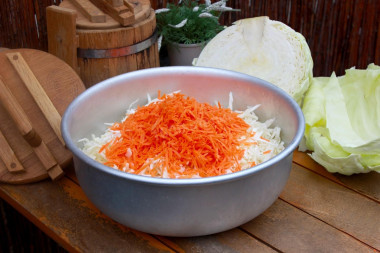
Send carrots to cabbage.
Step 6:
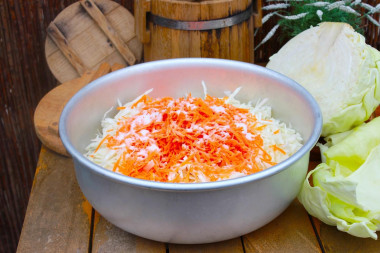
Add salt and sugar. Stir and taste (I added a little more salt).
Step 7:
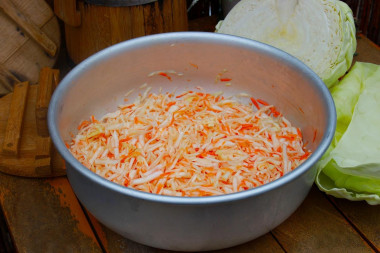
Mash the vegetables with your hands and mix thoroughly.
Step 8:
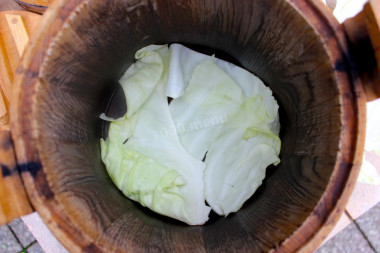
Put whole cabbage leaves on the bottom of the barrel.
Step 9:
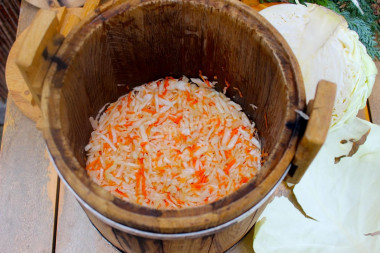
Send cabbage and carrots to the same place, tamp it tightly. Prepare the next portion of cabbage and send it to the barrel.
Step 10:
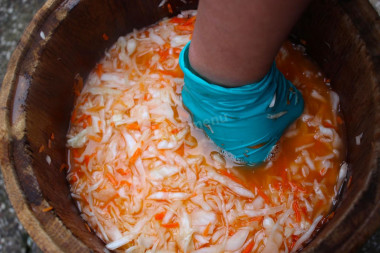
When the whole head and carrots are in the barrel, very well tamp them with your fist and press them until the juice appears on the surface. It is necessary to release as much air as possible, which could remain inside when laying vegetables in a barrel.
Step 11:
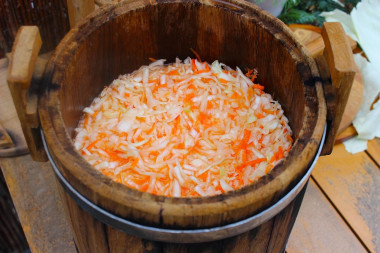
Do not tamp the cabbage to the very edges, leave room for the yoke and the lid. And in the process of fermentation, too much juice may form, which will eventually overflow over the edge.
Step 12:
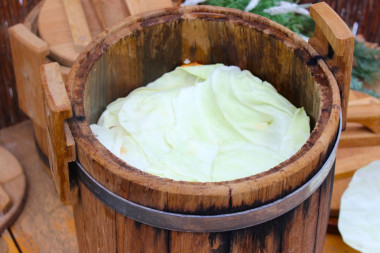
Put the remaining cabbage leaves on top in one layer. Instead of sheets, you can use gauze folded in two or three layers.
Step 13:
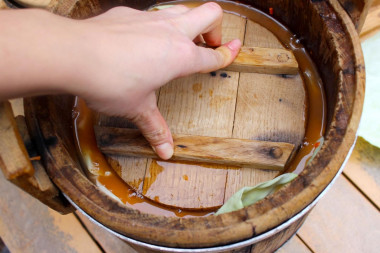
Set the pressure, cover the barrel with a lid and leave at room temperature for three to seven days. Periodically taste the cabbage to determine the degree of readiness. The fermentation time depends on the room temperature. I left the barrel for 4 days in a room where the temperature is about 21-23 degrees.
Step 14:
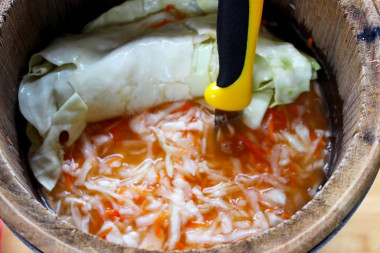
Periodically open the barrel (once a day will be quite enough), remove the top sheets of cabbage (or gauze, if you use it) and pierce the vegetables to the bottom of the barrel with a sharp long object. This way you will get rid of the accumulated gas.
Step 15:
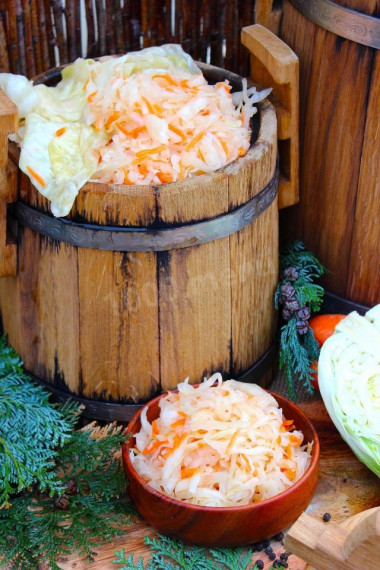
After fermenting indoors, remove the barrel to any sufficiently cool place or in the refrigerator. Sauerkraut is ready! It can be stored all winter.
Step 16:
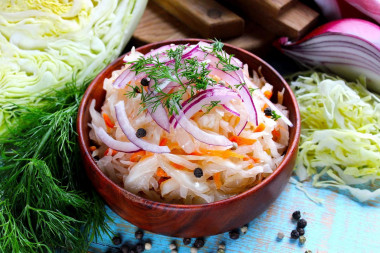
From sauerkraut, you can prepare the simplest and healthiest salad by adding onions, fragrant unrefined oil and herbs.
Bon appetit!
Caloric content of the products possible in the composition of the dish
- Green cabbage - 46 kcal/100g
- Fresh frozen green cabbage in a package - 45 kcal/100g
- Carrots - 33 kcal/100g
- Dried carrots - 275 kcal/100g
- Boiled carrots - 25 kcal/100g
- Granulated sugar - 398 kcal/100g
- Sugar - 398 kcal/100g
- Salt - 0 kcal/100g

